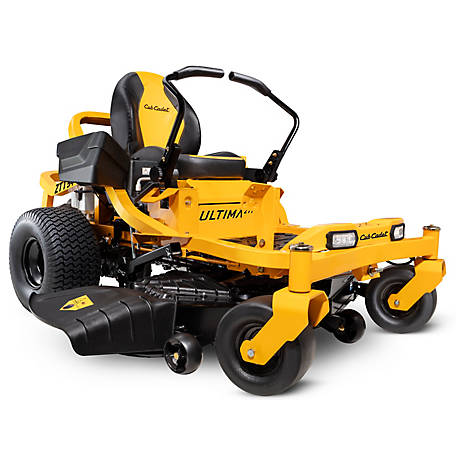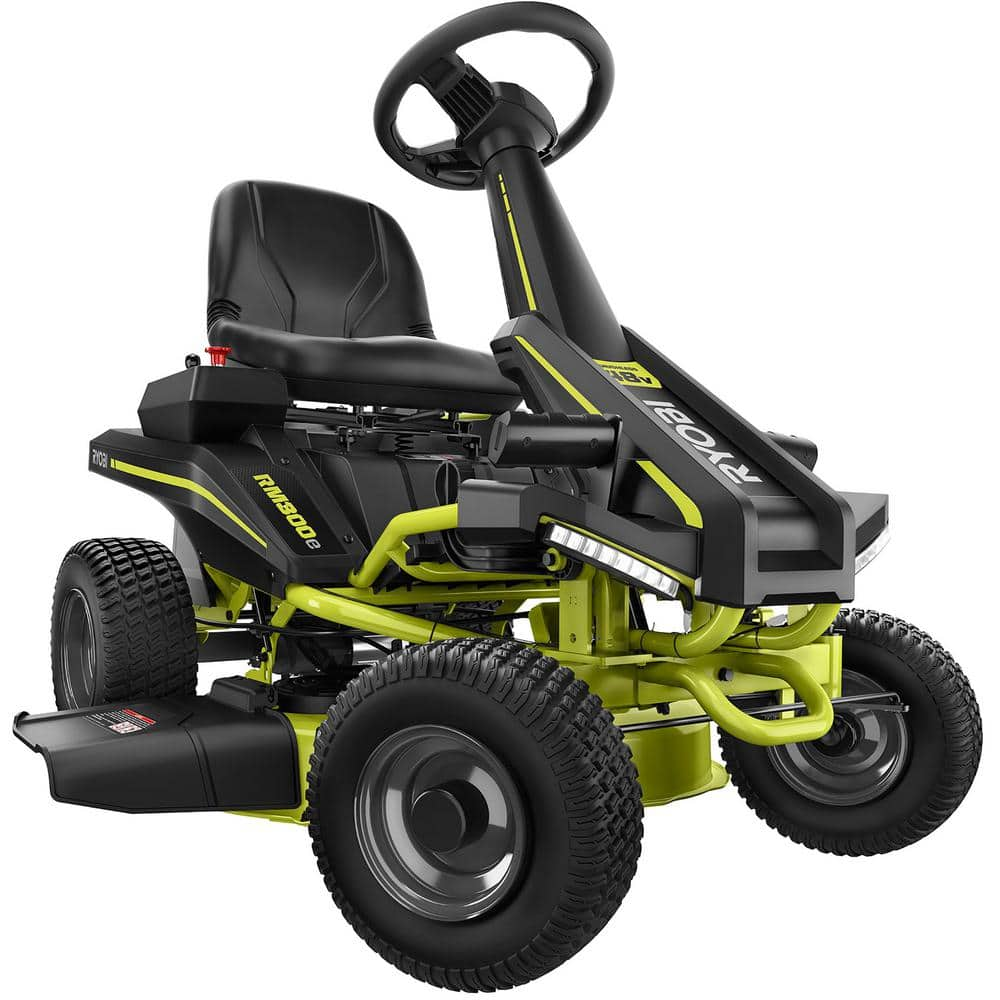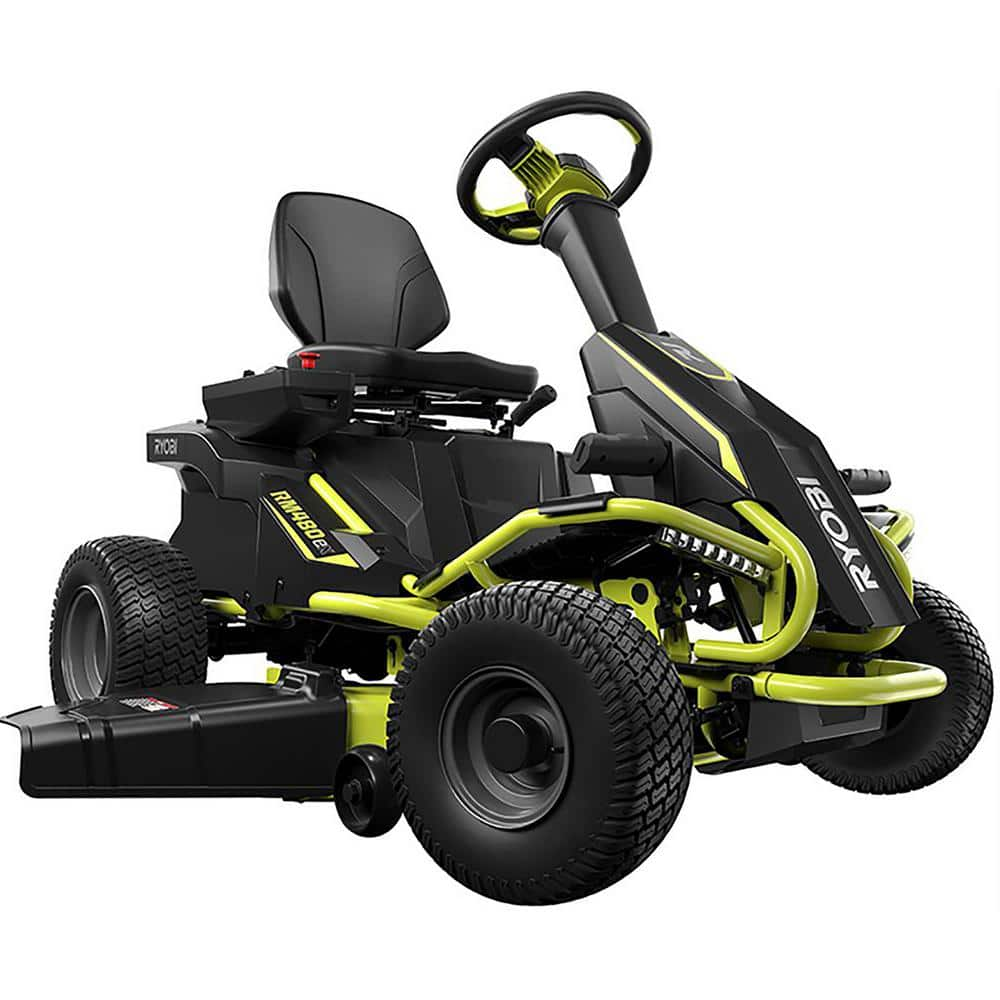Cub Cadet Ultima ZT1-54 24 HP Zero-Turn Riding Lawn Mower with Kohler 7000 Series V-Twin OHV 4-Cycle 725cc Engine, 17AREACM010
Equipped with an 11-Gauge 54 in. fabricated (Welded) triple-blade high lift deck with reinforced leading edges that results in finer clippings, fewer clumps, reduced stragglers and increased evenness, protected by the Cub Cadet triple guard corrosion defense system with e-coat and a lifetime warranty.
Introducing the ULTIMA ZT1 SERIES. Step up to the ultimate all-around mowing experience. The Cub Cadet ULTIMA Series ZT1 54 features a 24HP/725cc Kohler 7000 Series V-Twin OHV 4-Cycle Engine, 2 in. x 2 in. tubular steel frame, comfortable high back seat and much more. The Ultima Zero-Turn Riding Mower was built to raise the bar for enhanced strength, durability, redefined comfort and uncompromised performance.
- Equipped with an 11-Gauge 54 in. fabricated (Welded) triple-blade high lift deck with reinforced leading edges that results in finer clippings, fewer clumps, reduced stragglers and increased evenness, protected by the Cub Cadet triple guard corrosion defense system with e-coat and a lifetime warranty
- 24HP/725cc Kohler 7000 Series V-Twin OHV 4-Cycle Engine, V-twin cylinders reduce vibration for a smoother ride, Designed to run cooler and cleaner for longer, Delivers more power while decreasing fuel consumption
- Dual Hydro-Gear 2200 (EZT) Hydrostatic Drive System, Fan cooled 10cc pumps and wheel motors on each drive wheel, Provides optimal torque and speeds up to 7 MPH
- Tough and tubular frame the high-strength, continuous square 2 in. x 2 in. tubular steel frame with fully e-coat lower frame and triple guard corrosion defense system, a multi-step process electronically applies automotive-grade corrosion resistance with meticulous care to protect against wear and tear
- Dial in your perfect cut with a foot operated deck lift and a dial control knob offering 15 qt. in. deck height adjustments from 1 in. to 4. 5 in. leading to a precise and even cut
- High comfort, high performance an automotive-inspired, ergonomic, fully adjustable premium 18 in. H-back seat and a durable, advanced polymer seat suspension system, adjustable lap bars and industry-exclusive ergonomic hand grips optimized for comfort providing you the confidence to maximize your speed and reduce operator fatigue
- Turf damage prevention 11 in. x 6 in. to 5 in. smooth tread front wheels pivot 180 without turf damage, 20 in. x 10 in. to 8 in. turf master premium rear tires offer excellent traction, minimize turfing and provide a better ride on uneven ground at higher speeds
- Ease of maintenance an open frame design and hinged/removable floor pan allow easy access to the deck and engine for quick and simple maintenance
- Command center conveniently located control panel enhances operator productivity and vibration-dampening soft rubber floor mat provides sure footing, comfort and ample leg room
- Precision trimming offset front casters align with blade edge for trimming precision while maintaining line-of-sight and stable balance
- Illuminating dual-LED headlights provide ultimate vision for mowing in low light conditions and tow hitch come standard
- Mow for an extended period of time: 3.5 gal. fuel tank capacity to keep you mowing and minimize time loss for refueling needs
- Electronic fingertip blade engagement PTO allows for smooth operation of the deck
- 3-way adjustable ergonomic lap bar design with integrated parking brake and mow-in-reverse, provides comfort with a simple operation
- Ideal for mowing slight rolling hills and several obstacles up to 4 acres
- Expand your mowers capabilities: full lineup of premium attachments and accessories include baggers, mulch kits, carts and many other attachments (sold separately)
- Cub Cadet Ultima ZT1-54 comes fully crated and requires some assembly upon arrival
The Strongest Warranty in it’s class 3-year / unlimited-hour warranty. Plus, limited lifetime warranty on frame and fabricated deck shell.
Additional information
| Cut Height Range | 15 in. deck height adjustments from 1 in. to 4.5 in. |
|---|---|
| Cutting Width | 54 in. |
| Deck Size | 54 in. |
| Front Wheel or Tire Size | 11 in. x 6 in. |
| Product Weight | 600 lb. |
| Product Length | 80 in. |
| Product Height | 47 in. |
| Product Width | 65 in. |
| Rear Wheel or Tire Size | 20 x 10 in. |
| Seat Back Height | 18 in. |
24 may refer to:
- 24 (number), the natural number following 23 and preceding 25
- one of the years 24 BC, AD 24, 1924, 2024
4 (four) is a number, numeral and digit. It is the natural number following 3 and preceding 5. It is a square number, the smallest semiprime and composite number, and is considered unlucky in many East Asian cultures.
54 may refer to:
- 54 (number)
- one of the years 54 BC, AD 54, 1954, 2054
- 54 (novel), a 2002 novel by Wu Ming
- Studio 54, a New York City nightclub from 1977 until 1981
- Fifty-Four (film), a 1998 American drama film about the club
- 54 (album), a 2010 album by Metropole Orkest
- "Fifty Four", a song by Karma to Burn from the album Arch Stanton, 2014
- 54th Division (disambiguation)
- 54th Regiment of Foot (disambiguation)
- 54th Infantry (disambiguation)
- 54 Alexandra, a main-belt asteroid
7000 may refer to:
- 7000 (number) and the 7000s
- The last year of the 7th millennium, an exceptional common year starting on Wednesday
A cadet is a student or trainee, and is typically used in military settings to denote an individual undergoing training to become commissioned officers. Several civilian organisations, including civil aviation groups, maritime organisations, and police services, also designate their trainees as cadets.
A cub is the young of certain large predatory animals, such as big cats and bears.
Cub or CUB may also refer to:
An engine or motor is a machine designed to convert one or more forms of energy into mechanical energy.
Available energy sources include potential energy (e.g. energy of the Earth's gravitational field as exploited in hydroelectric power generation), heat energy (e.g. geothermal), chemical energy, electric potential and nuclear energy (from nuclear fission or nuclear fusion). Many of these processes generate heat as an intermediate energy form, so heat engines have special importance. Some natural processes, such as atmospheric convection cells convert environmental heat into motion (e.g. in the form of rising air currents). Mechanical energy is of particular importance in transportation, but also plays a role in many industrial processes such as cutting, grinding, crushing, and mixing.
Mechanical heat engines convert heat into work via various thermodynamic processes. The internal combustion engine is perhaps the most common example of a mechanical heat engine, in which heat from the combustion of a fuel causes rapid pressurisation of the gaseous combustion products in the combustion chamber, causing them to expand and drive a piston, which turns a crankshaft. Unlike internal combustion engines, a reaction engine (such as a jet engine) produces thrust by expelling reaction mass, in accordance with Newton's third law of motion.
Apart from heat engines, electric motors convert electrical energy into mechanical motion, pneumatic motors use compressed air, and clockwork motors in wind-up toys use elastic energy. In biological systems, molecular motors, like myosins in muscles, use chemical energy to create forces and ultimately motion (a chemical engine, but not a heat engine).
Chemical heat engines which employ air (ambient atmospheric gas) as a part of the fuel reaction are regarded as airbreathing engines. Chemical heat engines designed to operate outside of Earth's atmosphere (e.g. rockets, deeply submerged submarines) need to carry an additional fuel component called the oxidizer (although there exist super-oxidizers suitable for use in rockets, such as fluorine, a more powerful oxidant than oxygen itself); or the application needs to obtain heat by non-chemical means, such as by means of nuclear reactions.
Kohler is an occupational surname of German origin. It means "charcoal burner". Notable people with the surname include:
- Alan Kohler, Australian journalist
- Anton Kohler, German chess player
- Berthold Kohler (born 1961), German journalist
- Charles-Amédée Kohler (1790–1874), Swiss chocolate maker
- Ernesto Kohler (1849–1907), flautist and composer
- Fred Kohler, American actor
- Josef Kohler, German jurist
- Juliane Köhler, German actress
- Jürgen Kohler, former German football player
- Kaufmann Kohler (1843–1926), Reform rabbi
- Klaus J. Kohler, German phonetician
- Max J. Kohler, American lawyer
- Richie Kohler, shipwreck diver and historian
- Sheila Kohler, South African writer
- Peter Kohler, American writer, historian and philanthropist
A lawn () is an area of soil-covered land planted with grasses and other durable plants such as clover which are maintained at a short height with a lawn mower (or sometimes grazing animals) and used for aesthetic and recreational purposes—it is also commonly referred to as part of a garden. Lawns are usually composed only of grass species, subject to weed and pest control, maintained in a green color (e.g., by watering), and are regularly mowed to ensure an acceptable length. Lawns are used around houses, apartments, commercial buildings and offices. Many city parks also have large lawn areas. In recreational contexts, the specialised names turf, pitch, field or green may be used, depending on the sport and the continent.
The term "lawn", referring to a managed grass space, dates to at least the 16th century. With suburban expansion, the lawn has become culturally ingrained in some areas of the world as part of the desired household aesthetic. However, awareness of the negative environmental impact of this ideal is growing. In some jurisdictions where there are water shortages, local government authorities are encouraging alternatives to lawns to reduce water use. Researchers in the United States have noted that suburban lawns are "biological deserts" that are contributing to a "continental-scale ecological homogenization." Lawn maintenance practices also cause biodiversity loss in surrounding areas.
A mower is a person or machine that cuts (mows) grass or other plants that grow on the ground. Usually mowing is distinguished from reaping, which uses similar implements, but is the traditional term for harvesting grain crops, e.g. with reapers and combines.
A smaller mower used for lawns and sports grounds (playing fields) is called a lawn mower or grounds mower, which is often self-powered, or may also be small enough to be pushed by the operator. Grounds mowers have reel or rotary cutters. Larger mowers or mower-conditioners are mainly used to cut grass (or other crops) for hay or silage and often place the cut material into rows, which are referred to as windrows. Swathers (or windrowers) are also used to cut grass (and grain crops). Prior to the invention and adoption of mechanized mowers, (and today in places where use a mower is impractical or uneconomical), grass and grain crops were cut by hand using scythes or sickles.
OHV may refer to:
- Overhead valve engine
- Off-highway vehicle, aka off-road vehicle
- Off-roading
- California State Parks, Off-Highway Motor Vehicle Recreation Division
- El Mirage Off-Highway Vehicle Recreation Area at El Mirage Lake
- Off Highway Vehicle division hidden fund controversy
- Iron Range Off-Highway Vehicle State Recreation Area
To turn is to rotate, either continuously like a wheel turns on its axle, or in a finite motion changing an object's orientation. Turn may also refer to:
Twins are two offspring produced by the same pregnancy. Twins can be either monozygotic ('identical'), meaning that they develop from one zygote, which splits and forms two embryos, or dizygotic ('non-identical' or 'fraternal'), meaning that each twin develops from a separate egg and each egg is fertilized by its own sperm cell. Since identical twins develop from one zygote, they will share the same sex, while fraternal twins may or may not. In very rare cases twins can have the same mother and different fathers (heteropaternal superfecundation).
In contrast, a fetus that develops alone in the womb (the much more common case in humans) is called a singleton, and the general term for one offspring of a multiple birth is a multiple. Unrelated look-alikes whose resemblance parallels that of twins are referred to as doppelgänger.
V, or v, is the twenty-second letter of the Latin alphabet, used in the modern English alphabet, the alphabets of other western European languages and others worldwide. Its name in English is vee (pronounced ), plural vees.
With or WITH may refer to:
- With, a preposition in English
- Carl Johannes With (1877–1923), Danish doctor and arachnologist
- With (character), a character in D. N. Angel
- With (novel), a novel by Donald Harrington
- With (album), a 2014 album by TVXQ
- With (EP), a 2021 EP by Nam Woo-hyun






by Sayre
The zero trun is awesome mower and mow great and handles great.
by Robnreb
Stout, smooth, quick, and easy to maneuver. Learning to operate is easy.
by Tracy
Runs like a top. Performs like a more expensive commercial machine. Works very well for maintaining the 3 acres I need to mow.
by Maine
Dont know its been a month and its not here, wont be here for another week.